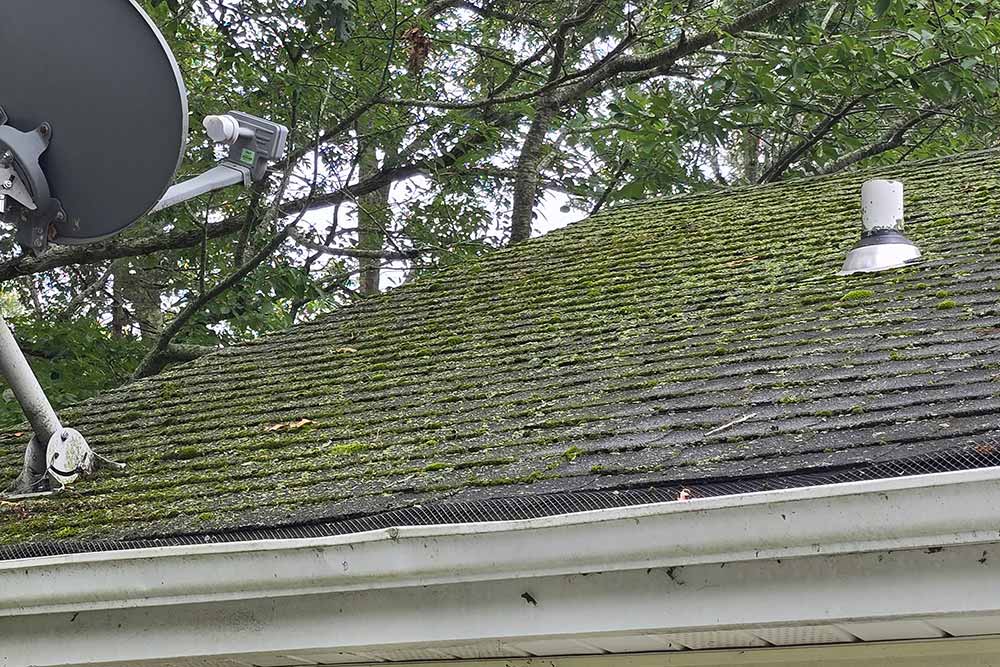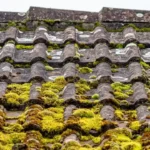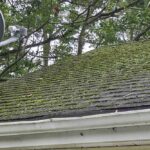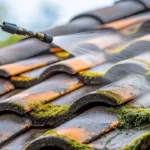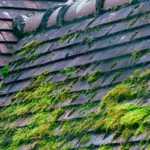Have you ever noticed green patches on your roof and wondered what they are? These green patches are often caused by roof moss spores. Understanding what they are and how they affect your home is crucial for homeowners. In this article, we will delve into the details of roof moss spores and provide guidance on how to manage them effectively.

What Are Roof Moss Spores?
Roof moss spores are tiny reproductive units of moss plants. These spores are lightweight and can be carried by the wind, landing on various surfaces, including your roof. Once they find a suitable environment, they germinate and grow into moss. The presence of moss on your roof is a common issue for many homeowners. Moss thrives in damp, shaded environments and can cause damage if left unchecked.
How Do Roof Moss Spores Spread?
The spread of roof moss spores is facilitated by several factors. Wind is a primary carrier, allowing spores to travel great distances. Animals and birds can also transport spores, spreading them from one location to another. Additionally, rain can wash spores onto roofs, providing the moisture they need to thrive.
Impact of Moss on Your Roof
Moss may seem harmless, but it can have significant impacts on your roof. As moss grows, it retains moisture against the surface of your roof, which can lead to rot and decay over time. This moisture retention can damage roofing materials, leading to leaks and structural issues. Moreover, moss can lift shingles, creating spaces where water can seep in.
Potential Risks of Ignoring Moss
Ignoring moss on your roof can lead to severe consequences. Over time, the damage caused by moss can result in costly repairs. Additionally, moss can reduce the lifespan of your roof, leading to premature replacement. It’s essential to address moss growth promptly to avoid these issues.
Prevention Tips for Homeowners
Preventing moss growth is more cost-effective than dealing with the aftermath. Here are some tips:
- Ensure your roof gets ample sunlight by trimming overhanging branches.
- Regularly clean your gutters to prevent blockages that can encourage moss growth.
- Consider installing zinc or copper strips along your roof ridge. These metals are toxic to moss and can help prevent its growth.
How to Remove Moss
When it comes to removing moss, you have two primary options: DIY or professional removal. For those looking to do it themselves, you can find valuable DIY budget tips to guide you in removing moss safely and effectively.
Professional vs. DIY Removal
While DIY methods can be effective, hiring a professional ensures thorough removal and less risk of damage to your roof. Professionals have the expertise and equipment necessary to remove moss without causing harm. You can read more about the pros and cons in our DIY vs. professional cleaning guide.
Importance of Regular Roof Maintenance
Regular maintenance is key to preventing moss growth. Schedule periodic inspections and cleanings to keep your roof in good condition. This proactive approach will not only prevent moss but also extend the life of your roof.
Cleaning Your Roof
Regular cleaning prevents the accumulation of debris that can encourage moss growth. Use a gentle cleaning solution and a soft brush to remove any buildup. Avoid pressure washing as it can damage your roof.
Environmentally Friendly Solutions
For those concerned about the environment, there are eco-friendly solutions available. Natural remedies such as vinegar or baking soda can be used to kill moss without causing harm to the environment.
Using Natural Remedies
Natural remedies are a great alternative to chemical solutions. Vinegar, for example, is acidic and can effectively kill moss. Apply it carefully to avoid damaging your roof.
When to Seek Professional Help
If you notice extensive moss growth or if DIY methods aren’t effective, it’s time to seek professional help. Professional roofers can assess the situation and provide the best solution for your roof.
Choosing the Right Professional
When selecting a professional, ensure they have experience with moss removal. Check reviews and ask for references to ensure quality service.
Conclusion
Understanding roof moss spores and taking preventive measures can save you time and money in the long run. With regular maintenance and prompt removal, you can protect your roof from the damaging effects of moss.

FAQ
Can moss really damage my roof?
Yes, moss can cause significant damage over time by retaining moisture and lifting shingles.
Is it safe to remove moss myself?
While DIY removal is possible, it’s crucial to follow safety precautions to avoid damaging your roof.
How often should I inspect my roof for moss?
It’s advisable to inspect your roof at least twice a year, especially in areas prone to moss growth.
For more information about moss and roofs, visit Abbey Roofing for expert insights.
This article contains affiliate links. We may earn a commission at no extra cost to you.



